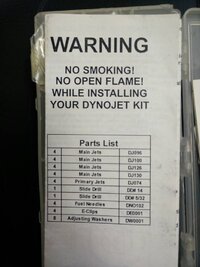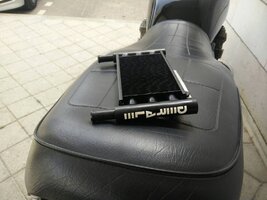Dave, I don't even have a garage

). Lucky I own sufficient storage space on the ground floor of my building, for tools and spares for this bike and an old car I have.
I didn't always use the bike so heavily (there was a period when I worked a walking distance away from home), but indeed it's done about 100,000 miles since the big overhaul.
Since they started digging the subway in Tel-Aviv, the congestion has gone so bad that driving a car to work is almost out of the question.
I got the bike in the late 90's, it burnt more oil than fuel (well, not, but at least two quarts for 600mi). Then I had it fully overhauled top and bottom with all OEM parts.
So, yes I do know what burning oil smells like LOL.
Since then, I do all the service on the bike myself.
Today the bike uses about half a quart for every 600 mi. in average. I'm riding it pretty hard (for its age), around 7000-7500 rpm on the highway. It also has a very small oil leak at where the pickup wiring exits from under the left cover.
In Israel, it's pretty warm all year round and gets very hot in the summer. That's why I'm considering adding an oil cooler.
I use Castrol Power1 15w50 semi-synth motorcycle oil. Used to use Motul, but then someone told me that Ester additive was bad for air-cooled bikes. So Castrol since two oil changes ago.
I'll take a picture of a plug tomorrow morning (it's 10:30pm here now) and post it here. Seems very dark brown to me, not dirty. Has some grey spots on the outer circumference. I'd be glad if someone took a second look at it.
I'll do the sniff test again, LOL, but it definitely smells like gas. No real smoke, just bad, obnoxious smell of exhaust fumes.
Speaking of fuel - in Israel they add shit mostly to diesel fuel. Unleaded is just generally of lower octane than stated, I heard our 98 is more like European 95... That's why I use 98, and also for the reason not many people use it, so there's less point for the stations to mess with it. I used to run 96 leaded, and it was perfect, until it was banned.
Will get back with plug pic tomorrow.
Sorry for the long preface, but me and that bike have a very long history together too)))
Thanks!
 . Makes me think it doesn't burn all the fuel, or very rich.
. Makes me think it doesn't burn all the fuel, or very rich.


